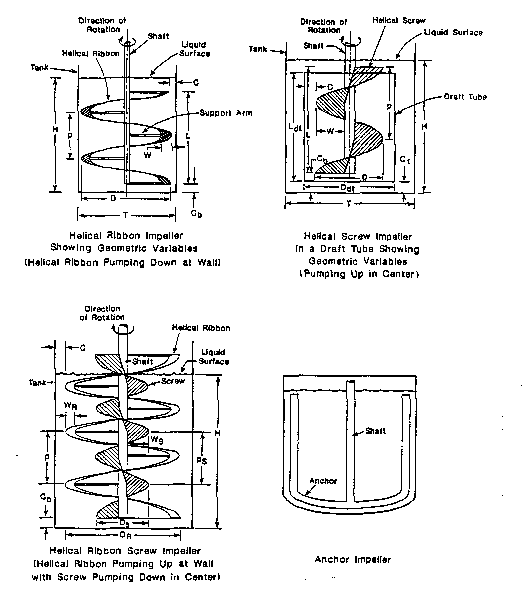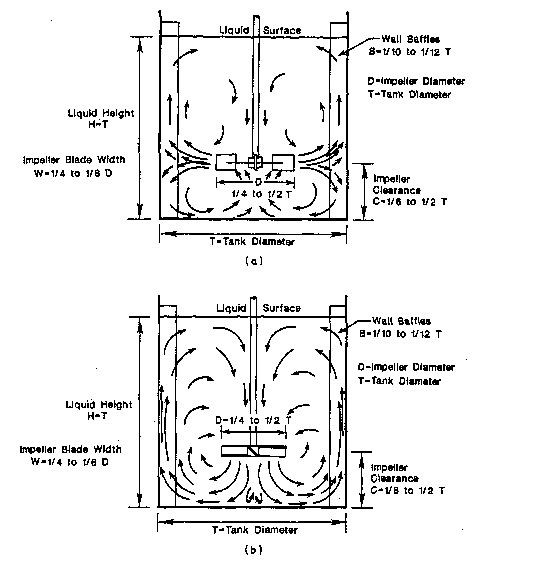
Figure 1: Laminar Flow Impellers
Impellers are classified as either laminar (viscous) or turbulent mixers. For situations involving very viscous fluids where laminar mixing is present, the diameter of the impeller approaches the diameter of the tank. The larger impellers aid in the transport of momentum throughout the tank and ensure that the fluid is moving close to the tank wall. Some common geometries of laminar impellers are the ribbon impeller, the screw impeller, and the anchor impeller.

These impellers are also very useful in heat transfer applications when it is important that the fluid closest to the wall moves at high velocities.
Turbulent mixers can be further categorized as axial or radial flow mixers. Axial flow impellers cause the tank fluid to flow parallel to the impeller's axis of rotation while radial flow impellers cause the tank fluid to flow perpendicular to the impeller's axis of rotation. The following figure shows the different flow patterns achieved by using either a radial or axial flow impeller.

Some common geometries for radial flow mixers include disk style flat blade turbines and curved blade turbines, while some common axial flow impellers are the propeller and pitched blade turbine.

 To the Mixing in Chemical Reactors Main Page
To the Mixing in Chemical Reactors Main Page